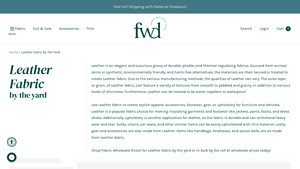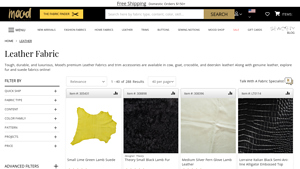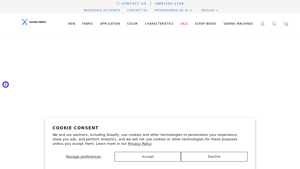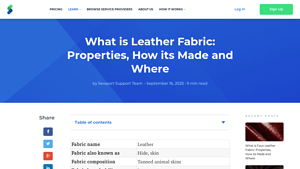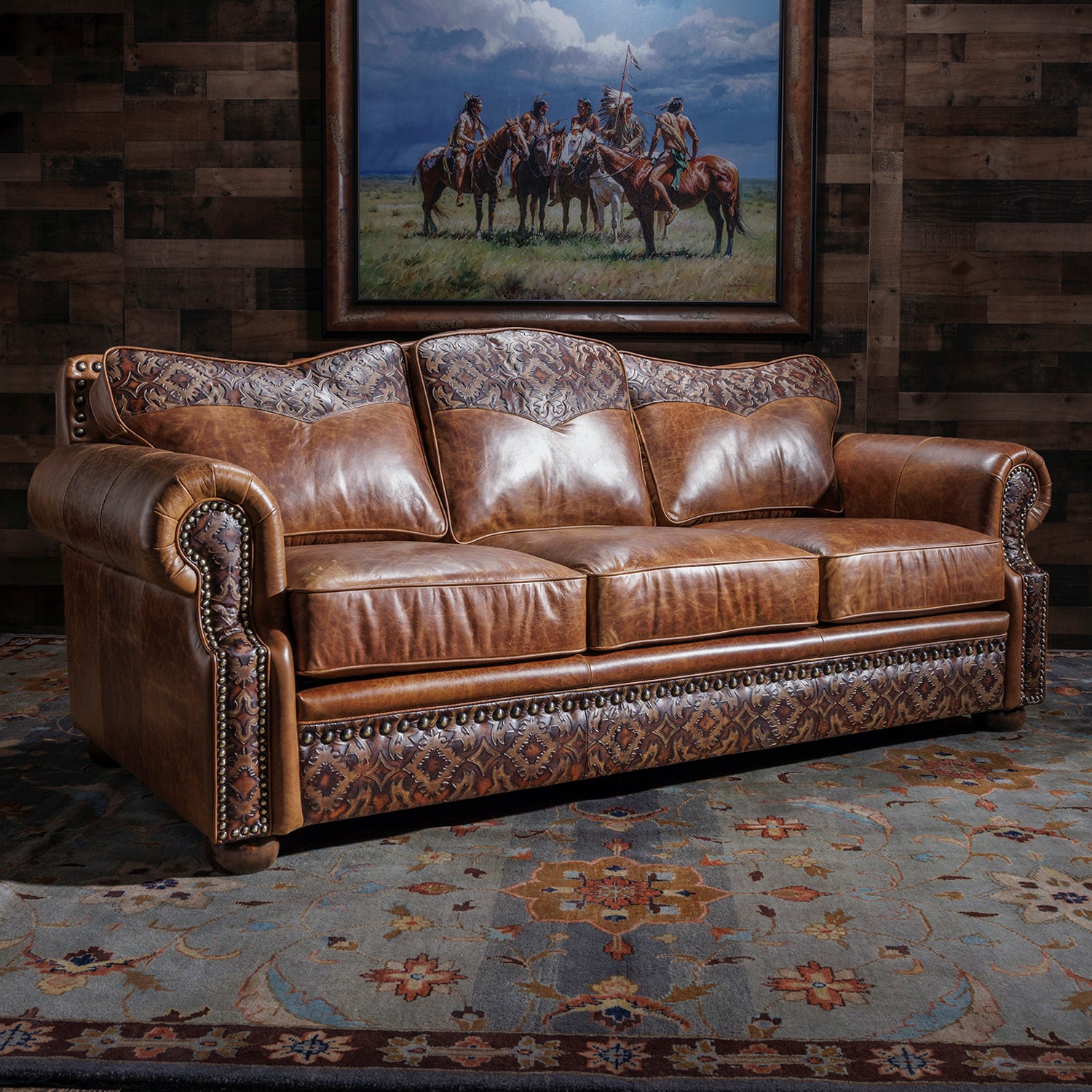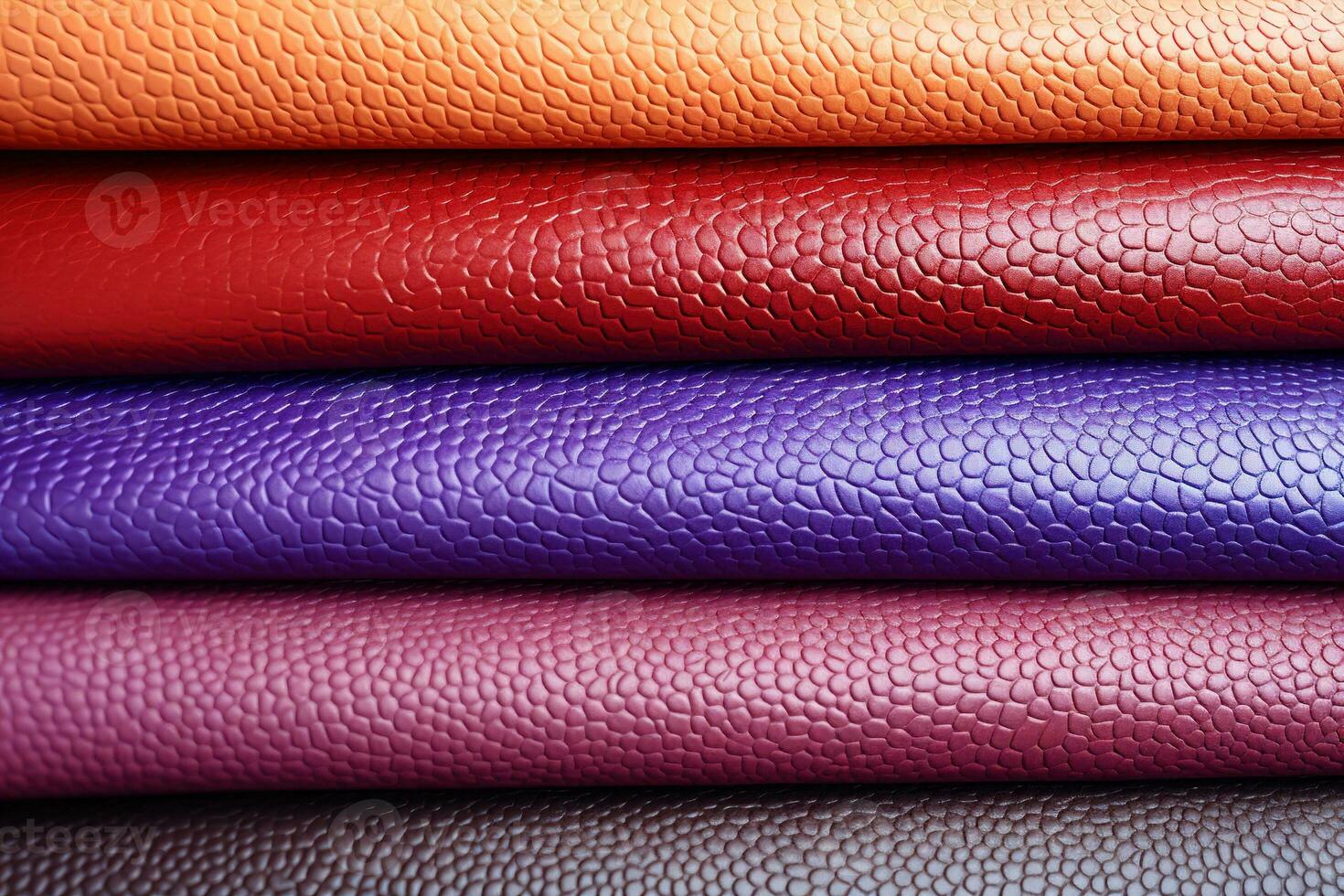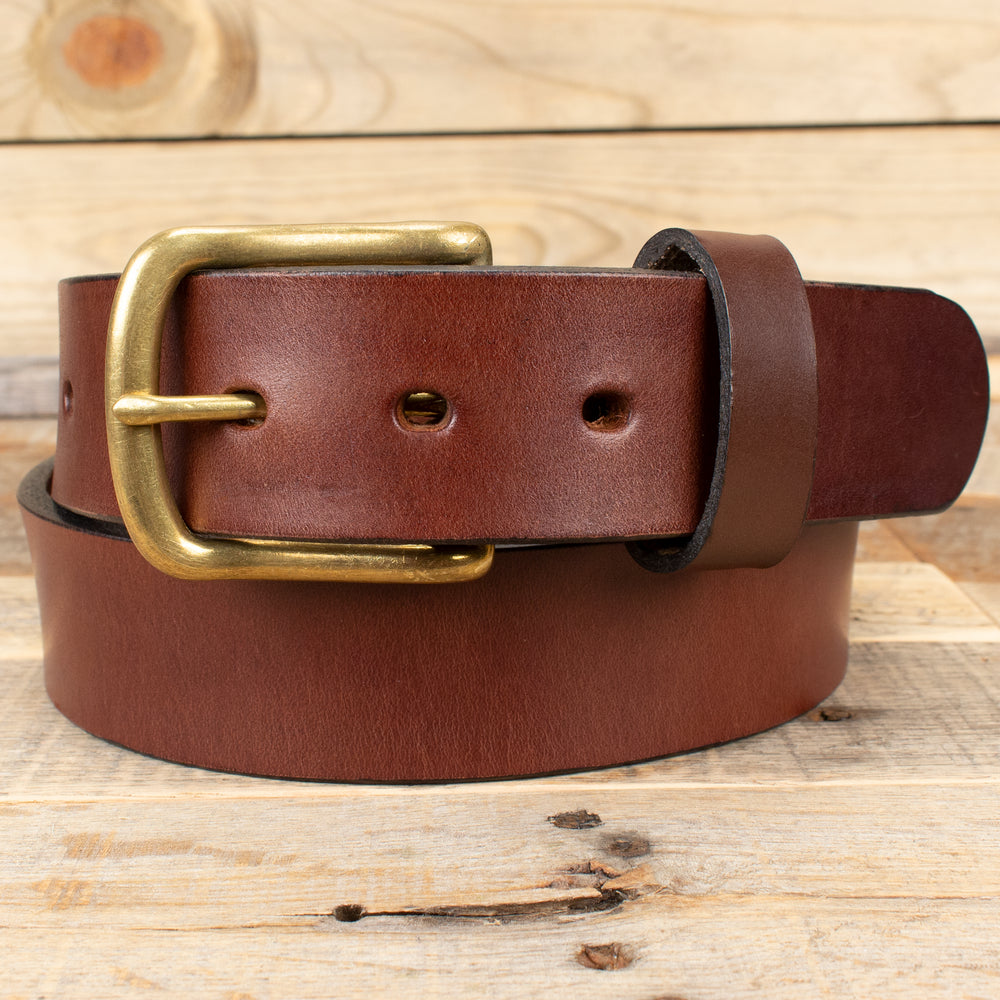Introduction: Navigating the Global Market for leather garment fabric
In an increasingly competitive global marketplace, B2B buyers face the critical challenge of sourcing high-quality leather garment fabric that meets diverse needs and standards. This guide delves into the intricacies of leather garment fabric, offering insights into its various types, applications, and the factors influencing cost. As international buyers, especially from regions like Africa, South America, the Middle East, and Europe—including emerging markets such as Vietnam and Saudi Arabia—navigate their sourcing decisions, understanding the nuances of leather fabric becomes imperative.
The comprehensive nature of this guide empowers you to make informed purchasing decisions. It covers essential topics such as the characteristics of different leather types, effective supplier vetting practices, and insights into market trends that could impact your procurement strategy. Moreover, it highlights how to assess quality and sustainability, which are increasingly important to consumers and businesses alike.
By leveraging the information contained within this guide, B2B buyers can confidently navigate the complexities of the leather garment fabric market. Whether you are looking to enhance your product offerings or ensure compliance with regional standards, this resource equips you with the knowledge to source competitively and responsibly.
Table Of Contents
- Top 4 Leather Garment Fabric Manufacturers & Suppliers List
- Introduction: Navigating the Global Market for leather garment fabric
- Understanding leather garment fabric Types and Variations
- Key Industrial Applications of leather garment fabric
- 3 Common User Pain Points for ‘leather garment fabric’ & Their Solutions
- Strategic Material Selection Guide for leather garment fabric
- In-depth Look: Manufacturing Processes and Quality Assurance for leather garment fabric
- Practical Sourcing Guide: A Step-by-Step Checklist for ‘leather garment fabric’
- Comprehensive Cost and Pricing Analysis for leather garment fabric Sourcing
- Alternatives Analysis: Comparing leather garment fabric With Other Solutions
- Essential Technical Properties and Trade Terminology for leather garment fabric
- Navigating Market Dynamics and Sourcing Trends in the leather garment fabric Sector
- Frequently Asked Questions (FAQs) for B2B Buyers of leather garment fabric
- Strategic Sourcing Conclusion and Outlook for leather garment fabric
- Important Disclaimer & Terms of Use
Understanding leather garment fabric Types and Variations
| Type Name | Key Distinguishing Features | Primary B2B Applications | Brief Pros & Cons for Buyers |
|---|---|---|---|
| Full Grain Leather | Retains the original grain, offering durability and breathability | High-end apparel, luxury goods | Pros: Superior quality, natural aesthetics. Cons: Expensive, requires care. |
| Top Grain Leather | Sanded and finished surface, softer than full grain | Fashion apparel, accessories | Pros: Soft feel, easier to maintain. Cons: Less durable than full grain. |
| Suede | Soft, napped finish created from the underside of the hide | Casual wear, footwear, upholstery | Pros: Luxurious texture, lightweight. Cons: Less water-resistant, stains easily. |
| Nubuck | Sanded top grain leather with a velvety finish | Footwear, jackets, handbags | Pros: Durable, rich appearance. Cons: Requires regular maintenance, sensitive to moisture. |
| Faux Leather | Synthetic alternative, often more affordable | Budget-friendly apparel, accessories | Pros: Cost-effective, animal-friendly. Cons: Less durability, often less breathable. |
What Are the Key Characteristics of Full Grain Leather for B2B Buyers?
Full grain leather is the highest quality leather available, featuring the original surface of the hide. This type retains natural imperfections, showcasing a unique aesthetic that is highly valued in luxury markets. It is known for its durability and breathability, making it suitable for high-end apparel and luxury goods. B2B buyers should consider sourcing full grain leather for products that demand longevity and a premium finish, though they should be prepared for a higher price point and the need for regular care.
How Does Top Grain Leather Compare in Suitability for Various Applications?
Top grain leather is the second-highest quality, characterized by a sanded surface that gives it a softer feel. This leather is often used in fashion apparel and accessories due to its appealing texture and easier maintenance compared to full grain leather. While it offers a good balance between quality and price, B2B buyers should weigh its slightly reduced durability against its affordability and aesthetic appeal, making it a suitable choice for mid-range products.
What Advantages Does Suede Offer for Casual Wear and Upholstery?
Suede is created from the underside of the hide, resulting in a soft, napped finish that is both luxurious and lightweight. It is commonly used in casual wear, footwear, and upholstery, appealing to buyers looking for comfort and style. However, B2B buyers should be cautious of its vulnerability to moisture and staining, which may require special treatments or care instructions to maintain its appearance.
Why Choose Nubuck for Footwear and Jackets?
Nubuck is a type of leather that has been sanded to create a velvety texture, providing a rich appearance while remaining durable. It is ideal for products like footwear, jackets, and handbags, where both style and resilience are essential. B2B buyers should note that while nubuck offers a sophisticated look, it requires regular maintenance and is sensitive to moisture, which could impact its longevity in certain applications.
What Are the Benefits and Drawbacks of Faux Leather for Budget-Conscious Buyers?
Faux leather, a synthetic alternative, is often more affordable and appeals to a growing market of environmentally conscious consumers. It is widely used in budget-friendly apparel and accessories. While it provides a cost-effective option, B2B buyers must consider its lesser durability and breathability compared to genuine leather. This makes faux leather suitable for short-term use or fashion items that may not require the longevity of real leather.
Key Industrial Applications of leather garment fabric
| Industry/Sector | Specific Application of leather garment fabric | Value/Benefit for the Business | Key Sourcing Considerations for this Application |
|---|---|---|---|
| Fashion and Apparel | Production of high-end jackets and coats | Enhanced brand reputation through premium offerings | Quality of leather, sourcing sustainability, and price |
| Automotive | Upholstery for luxury car interiors | Increased vehicle value and customer satisfaction | Durability, color options, and compatibility with vehicle design |
| Footwear | Manufacturing of stylish and durable shoes | Competitive edge in the footwear market | Comfort, breathability, and design flexibility |
| Sports Equipment | Production of leather sports gear | Improved performance and brand loyalty | Material strength, weight, and moisture resistance |
| Furniture | Upholstery for high-end furniture | Long-lasting products that appeal to consumers | Texture, color, and maintenance requirements |
How is Leather Garment Fabric Used in the Fashion and Apparel Industry?
In the fashion and apparel industry, leather garment fabric is primarily utilized for creating high-end jackets, coats, and other outerwear. The luxurious appearance and durability of leather enhance the brand’s reputation, making it a popular choice among designers targeting affluent consumers. Buyers in this sector should focus on sourcing high-quality leather that not only meets aesthetic standards but also aligns with sustainability practices, as eco-conscious consumers are increasingly influencing purchasing decisions.
What Role Does Leather Fabric Play in the Automotive Sector?
Leather garment fabric plays a crucial role in automotive upholstery, particularly for luxury car interiors. It elevates the aesthetic appeal of vehicles and contributes to a more comfortable and upscale driving experience. For B2B buyers in the automotive sector, sourcing durable and high-quality leather is essential, as it must withstand wear and tear while maintaining its luxurious appearance. Additionally, compatibility with existing vehicle designs and color options should be considered to meet customer preferences.
Why is Leather Essential in the Footwear Industry?
In the footwear industry, leather garment fabric is favored for its combination of style and durability, making it ideal for both casual and formal shoe production. The use of leather enhances comfort and breathability, which are critical factors for consumers. B2B buyers should prioritize sourcing leather that meets specific requirements for flexibility and moisture resistance to ensure customer satisfaction and loyalty in a competitive market.
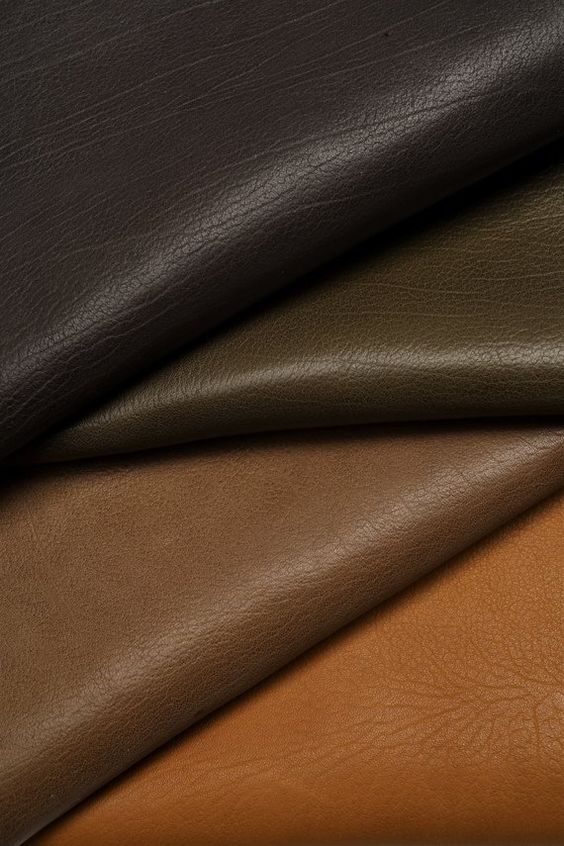
Illustrative image related to leather garment fabric
How is Leather Used in Sports Equipment Manufacturing?
Leather garment fabric is commonly used in the production of sports gear, such as gloves, balls, and protective equipment. Its strength and durability improve performance while providing a premium feel that athletes appreciate. For international buyers, sourcing leather that meets rigorous performance standards is vital, along with considerations for weight and moisture resistance. This ensures that the final products can withstand the demands of various sports.
What Benefits Does Leather Offer in Furniture Upholstery?
In the furniture sector, leather garment fabric is a preferred choice for upholstering high-end furniture items, including sofas and chairs. Its durability and timeless appeal contribute to long-lasting products that attract consumers looking for quality. B2B buyers should focus on the texture and color of the leather, as well as maintenance requirements, to ensure that the final products meet consumer expectations for both style and longevity.
3 Common User Pain Points for ‘leather garment fabric’ & Their Solutions
Scenario 1: Sourcing Quality Leather Garment Fabric
The Problem:
B2B buyers often struggle with sourcing high-quality leather garment fabric that meets their specific design and durability requirements. The challenge is compounded when suppliers are located internationally, leading to concerns about the consistency of quality, color accuracy, and the risk of receiving defective materials. This is especially critical for businesses in fashion and apparel, where the integrity of the fabric directly impacts the final product’s reputation and customer satisfaction.
The Solution:
To mitigate these issues, buyers should develop a rigorous supplier evaluation process. Start by requesting samples from multiple suppliers to assess the quality firsthand. Evaluate the samples based on key criteria such as texture, thickness, flexibility, and colorfastness. Additionally, buyers should inquire about the supplier’s manufacturing processes and certifications to ensure compliance with industry standards. Establishing a clear communication line with suppliers can facilitate better understanding of material specifications and lead times. It may also be beneficial to visit manufacturing facilities or engage third-party quality assurance services to verify the production standards.
Scenario 2: Navigating Leather Fabric Care and Maintenance
The Problem:
Another common challenge for B2B buyers is understanding the proper care and maintenance of leather garment fabric. Unlike synthetic fabrics, leather requires specific cleaning techniques and products to maintain its appearance and longevity. Mismanagement of leather care can lead to irreversible damage, affecting the aesthetic quality of products and leading to costly returns or customer dissatisfaction.
The Solution:
Buyers should invest in educating their teams about leather care best practices. This can include creating comprehensive care guidelines that outline appropriate cleaning methods, recommended products, and preventive measures against wear and tear. Partnering with leather care product manufacturers can provide exclusive access to effective cleaning solutions. Additionally, consider training sessions for employees involved in production and retail to ensure they understand how to handle leather garments properly. Providing this information to end consumers, through tags or digital resources, can also enhance customer satisfaction and reduce the risk of product damage.
Scenario 3: Addressing Ethical and Sustainability Concerns in Leather Sourcing
The Problem:
With growing consumer awareness around ethical sourcing and sustainability, B2B buyers face pressure to ensure that their leather garment fabric is sourced responsibly. This concern is particularly prevalent in regions like Europe and North America, where consumers are increasingly rejecting products that do not meet ethical standards. Buyers may find it difficult to identify suppliers who adhere to sustainable practices, which can lead to reputational risks and lost sales opportunities.
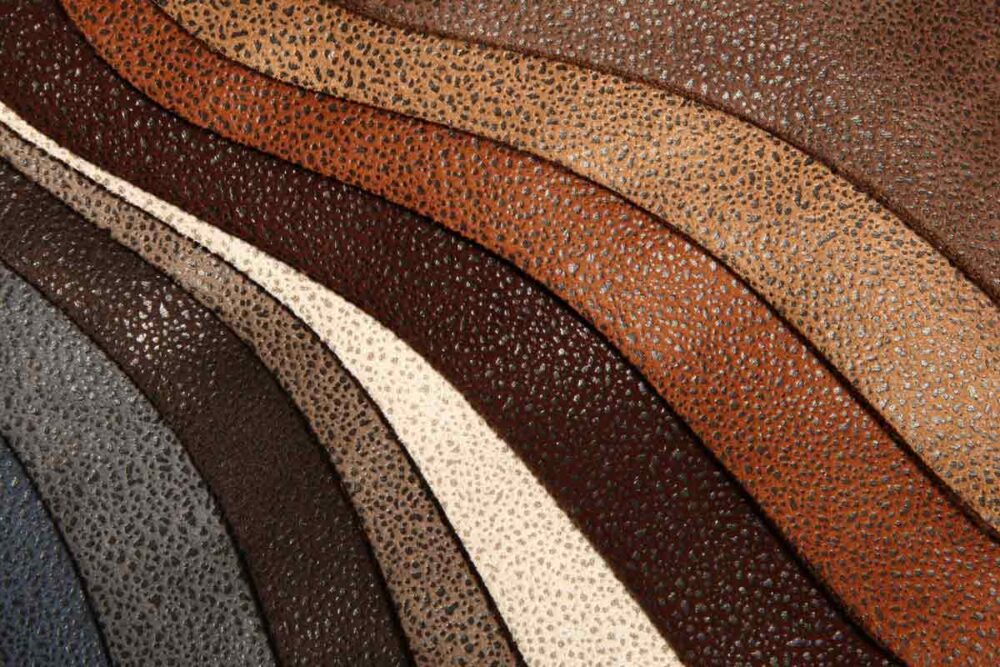
Illustrative image related to leather garment fabric
The Solution:
To address these concerns, buyers should prioritize transparency in their supply chain. This includes researching and selecting suppliers who provide detailed information on their sourcing practices, including animal welfare standards, environmental impact, and waste management strategies. Establishing partnerships with suppliers that have certifications, such as the Leather Working Group, can enhance credibility and demonstrate commitment to sustainability. Additionally, buyers can consider exploring alternative materials, such as eco-friendly synthetic leathers, as part of their product offerings. Communicating these initiatives to customers can also strengthen brand loyalty and align with market trends toward sustainability.
Strategic Material Selection Guide for leather garment fabric
What Are the Key Properties of Common Leather Garment Fabrics?
When selecting leather garment fabrics, understanding the properties of various materials is essential for ensuring optimal performance and suitability for specific applications. Below, we analyze four common materials used in leather garments: genuine leather, synthetic leather, suede, and nubuck.
Genuine Leather: What Are Its Key Properties and Suitability?
Genuine leather, derived from animal hides, is renowned for its durability and natural aesthetics. It boasts excellent temperature regulation, making it suitable for various climates. Genuine leather is resistant to wear and tear, offering a long lifespan when properly maintained. However, it can be sensitive to moisture and requires regular conditioning to prevent drying or cracking.
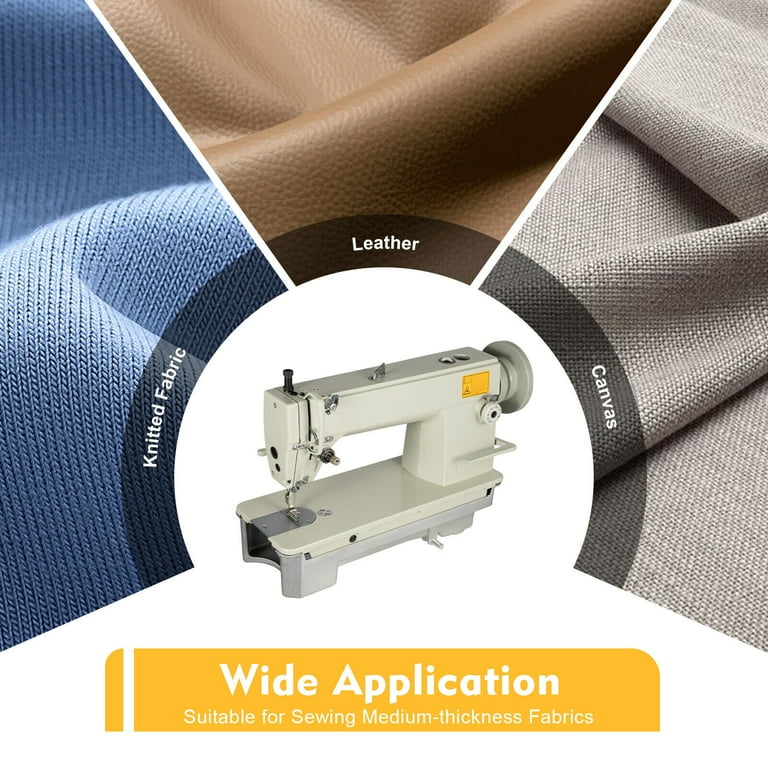
Illustrative image related to leather garment fabric
Pros: High durability, natural look, and breathability.
Cons: Higher cost, maintenance required, and potential ethical concerns regarding sourcing.
Impact on Application: Ideal for high-end fashion garments, jackets, and accessories, where appearance and longevity are paramount.
Considerations for International Buyers: Compliance with animal welfare standards and sourcing regulations is critical, particularly in regions with strict regulations, such as the EU.
Synthetic Leather: How Does It Compare in Performance?
Synthetic leather, often made from polyurethane (PU) or polyvinyl chloride (PVC), offers a more affordable alternative to genuine leather. It is highly resistant to water and stains, making it easier to clean and maintain. Synthetic leather can also be produced in a variety of colors and textures, allowing for greater design flexibility.
Pros: Cost-effective, low maintenance, and available in diverse styles.
Cons: Less breathable than genuine leather, may wear out faster, and can lack the premium feel.
Impact on Application: Suitable for mass-produced garments and accessories, especially in markets where cost is a significant factor.
Considerations for International Buyers: Buyers should ensure compliance with environmental regulations concerning synthetic materials, particularly in regions like Europe where sustainability is prioritized.
Suede: What Are Its Unique Characteristics?
Suede, a type of leather made from the underside of animal hides, is characterized by its soft texture and luxurious feel. It is less durable than genuine leather but offers a unique aesthetic appeal. Suede is also more susceptible to staining and water damage, necessitating protective treatments.
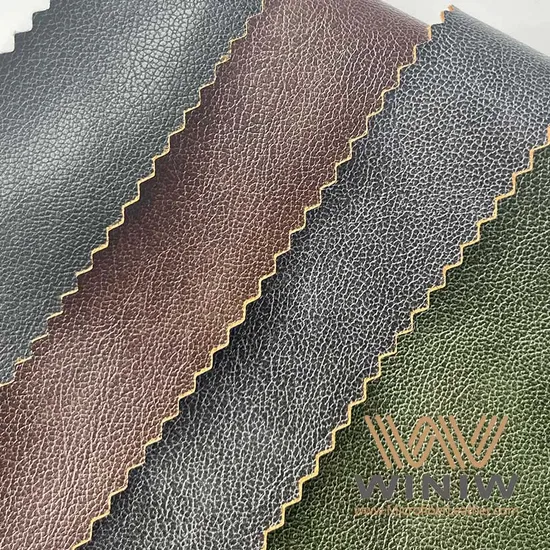
Illustrative image related to leather garment fabric
Pros: Soft texture, unique look, and lightweight.
Cons: Less durable, requires special care, and can be prone to staining.
Impact on Application: Often used in fashion garments, shoes, and accessories where comfort and style are prioritized over durability.
Considerations for International Buyers: Suede may require specific care instructions for maintenance, and buyers should be aware of any import regulations regarding animal products.
Nubuck: How Does It Differ from Other Leather Types?
Nubuck is similar to suede but is made from the outer layer of the hide, giving it a more durable finish. It has a soft, velvety texture and is more resistant to wear than suede. However, like suede, nubuck is also prone to staining and requires regular maintenance.
Pros: Durable, luxurious appearance, and offers a unique texture.
Cons: Requires regular care, susceptible to water damage, and can be more expensive than suede.
Impact on Application: Ideal for high-quality garments and accessories where a premium feel is desired.
Considerations for International Buyers: Buyers should check for compliance with quality standards and care instructions, especially in regions that emphasize product longevity.
Summary of Material Selection for Leather Garment Fabrics
| Material | Typical Use Case for leather garment fabric | Key Advantage | Key Disadvantage/Limitation | Relative Cost (Low/Med/High) |
|---|---|---|---|---|
| Genuine Leather | High-end fashion garments, jackets, accessories | High durability and natural aesthetics | Higher cost and maintenance required | High |
| Synthetic Leather | Mass-produced garments and accessories | Cost-effective and low maintenance | Less breathable and may wear out faster | Low |
| Suede | Fashion garments, shoes, accessories | Soft texture and unique look | Less durable and prone to staining | Medium |
| Nubuck | Premium garments and accessories | Luxurious appearance and durability | Requires regular care and can be expensive | Medium |
This guide provides a comprehensive overview of the strategic selection of leather garment fabrics, enabling B2B buyers to make informed decisions that align with their business needs and market demands.
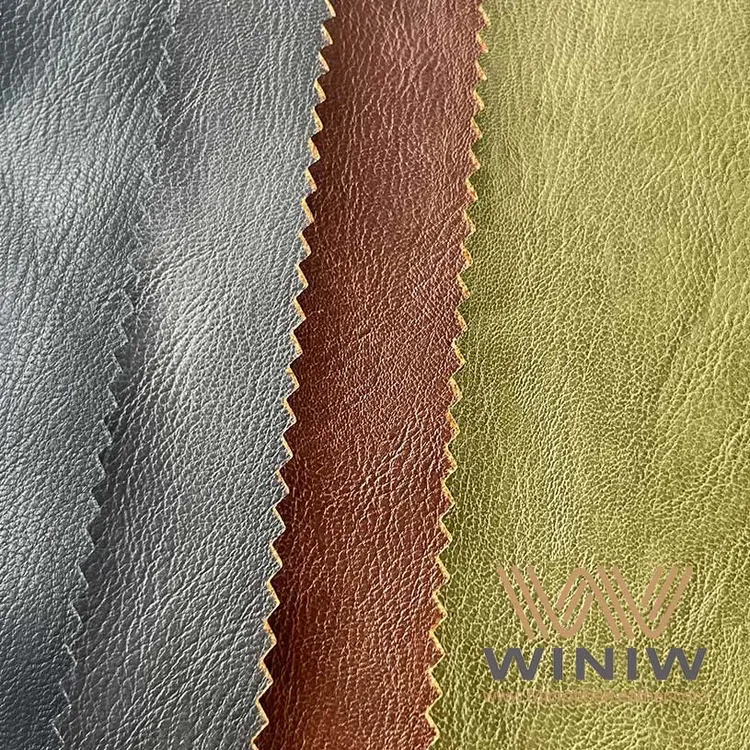
Illustrative image related to leather garment fabric
In-depth Look: Manufacturing Processes and Quality Assurance for leather garment fabric
What Are the Main Stages in the Manufacturing Process of Leather Garment Fabric?
The manufacturing of leather garment fabric involves several critical stages, each contributing to the final quality and durability of the product. The primary stages include material preparation, forming, assembly, and finishing.
-
Material Preparation: The journey begins with the selection of raw materials, which can be either natural leather sourced from animal hides or synthetic leather alternatives. For natural leather, hides undergo a cleaning process to remove impurities. This is followed by tanning, where hides are treated with chemicals or natural substances to preserve them and enhance their durability. Synthetic options involve the creation of polymer-based materials that mimic the look and feel of leather.
-
Forming: During the forming stage, the prepared leather is cut into patterns specific to garment designs. Advanced cutting techniques, such as laser cutting, are often employed to ensure precision and minimize waste. This stage may also involve the application of adhesives or stitches to join multiple pieces, depending on the complexity of the garment.
-
Assembly: The assembly process involves stitching together the cut pieces of leather. Quality stitching techniques are crucial here, as they not only affect the garment’s appearance but also its longevity. Specialized sewing machines designed for leather are used to handle the thickness and toughness of the material. Attention to detail is paramount, as any flaws in stitching can compromise the garment’s integrity.
-
Finishing: In the finishing stage, various treatments are applied to enhance the leather’s properties. This may include dyeing, polishing, and applying protective coatings to improve water resistance and durability. The finishing process also allows for the creation of different textures and finishes, catering to diverse aesthetic preferences.
How Is Quality Assurance Implemented in Leather Garment Fabric Manufacturing?
Quality assurance (QA) is an integral part of the leather garment fabric manufacturing process, ensuring that products meet international standards and customer expectations. The QA process typically involves adherence to specific international standards such as ISO 9001, which focuses on quality management systems.
-
Quality Control Checkpoints: Several checkpoints are established throughout the manufacturing process to maintain quality. These include:
– Incoming Quality Control (IQC): This initial checkpoint assesses raw materials upon arrival to ensure they meet predefined specifications.
– In-Process Quality Control (IPQC): Continuous monitoring occurs during production to identify and rectify defects early. This includes checking stitching quality, color consistency, and material durability.
– Final Quality Control (FQC): The last stage of QC involves a comprehensive inspection of finished products to ensure they meet quality standards before shipment. -
Common Testing Methods: Various tests are conducted to evaluate leather quality, including:
– Tensile Strength Tests: To assess the material’s strength and durability.
– Water Resistance Tests: To determine how well the leather withstands moisture.
– Colorfastness Tests: To ensure that dyes do not fade or bleed under normal wear conditions.
What International Standards Should B2B Buyers Be Aware Of?
International standards play a vital role in the leather industry, helping B2B buyers ensure that products meet safety and quality benchmarks. Key standards include:
- ISO 9001: This standard focuses on quality management systems, ensuring that manufacturers have processes in place to maintain quality throughout production.
- CE Marking: For products sold within the European Economic Area, this marking indicates conformity with health, safety, and environmental protection standards.
- API Standards: Relevant for leather used in specific industries, such as automotive or aerospace, where additional safety and performance requirements exist.
How Can B2B Buyers Verify Supplier Quality Control Practices?
Verifying a supplier’s quality control practices is essential for B2B buyers, particularly in international markets. Here are actionable steps buyers can take:
-
Conduct Supplier Audits: Regular audits of potential suppliers can provide insights into their manufacturing processes and quality control measures. This includes reviewing their compliance with international standards and examining their production facilities.
-
Request Quality Control Reports: Suppliers should be able to provide documentation detailing their quality control processes, including results from testing methods and any certifications they hold.
-
Engage Third-Party Inspection Services: Utilizing third-party inspection services can offer an unbiased assessment of the supplier’s quality control practices. These inspectors can conduct on-site evaluations and provide detailed reports on product quality.
What Are the Nuances of Quality Control for International B2B Buyers?
International buyers must navigate various nuances in quality control, particularly when sourcing from regions like Africa, South America, the Middle East, and Europe.
-
Cultural Differences: Understanding cultural attitudes towards quality can influence expectations. For instance, certain regions may prioritize craftsmanship over standardized production, which could affect quality perceptions.
-
Regulatory Compliance: Different countries have varying regulations regarding leather production and safety. Buyers must ensure that suppliers comply with local laws and international standards applicable to their markets.
-
Logistical Challenges: Shipping and handling can impact product quality. Buyers should establish clear guidelines for packaging and transportation to minimize damage during transit.
By understanding these factors, B2B buyers can make informed decisions and establish strong partnerships with suppliers, ensuring the delivery of high-quality leather garment fabrics that meet their needs.
Practical Sourcing Guide: A Step-by-Step Checklist for ‘leather garment fabric’
Introduction
Sourcing leather garment fabric requires careful consideration to ensure quality, sustainability, and suitability for your specific needs. This guide provides a step-by-step checklist for B2B buyers, helping you navigate the complexities of procurement and establish a reliable supply chain for your leather fabric needs.
Step 1: Define Your Technical Specifications
Before initiating the sourcing process, clearly outline your technical requirements. This includes the type of leather (genuine, synthetic, or eco-friendly), thickness, finish, and intended application (apparel, accessories, or upholstery). Having well-defined specifications ensures that suppliers understand your needs and can provide appropriate samples.
Step 2: Research Potential Suppliers
Conduct thorough research to identify potential suppliers who specialize in leather garment fabric. Utilize industry directories, trade shows, and online platforms to compile a list of manufacturers. Look for suppliers with a solid reputation and experience in the specific type of leather you require.
- Tip: Check supplier reviews and ratings to gauge their reliability and service quality.
Step 3: Evaluate Supplier Certifications
Verifying supplier certifications is critical to ensure compliance with industry standards and ethical practices. Look for certifications related to quality management (ISO 9001), environmental management (ISO 14001), and animal welfare standards. Suppliers with these certifications are more likely to deliver high-quality products sustainably.
- Action: Request documentation to verify their certifications and ensure they align with your company’s values.
Step 4: Request Samples for Quality Assessment
Once you have shortlisted potential suppliers, request samples of the leather fabric. This step is vital for assessing the quality, texture, and durability of the materials. Examine the samples under various lighting conditions and consider how they feel and look against your specifications.
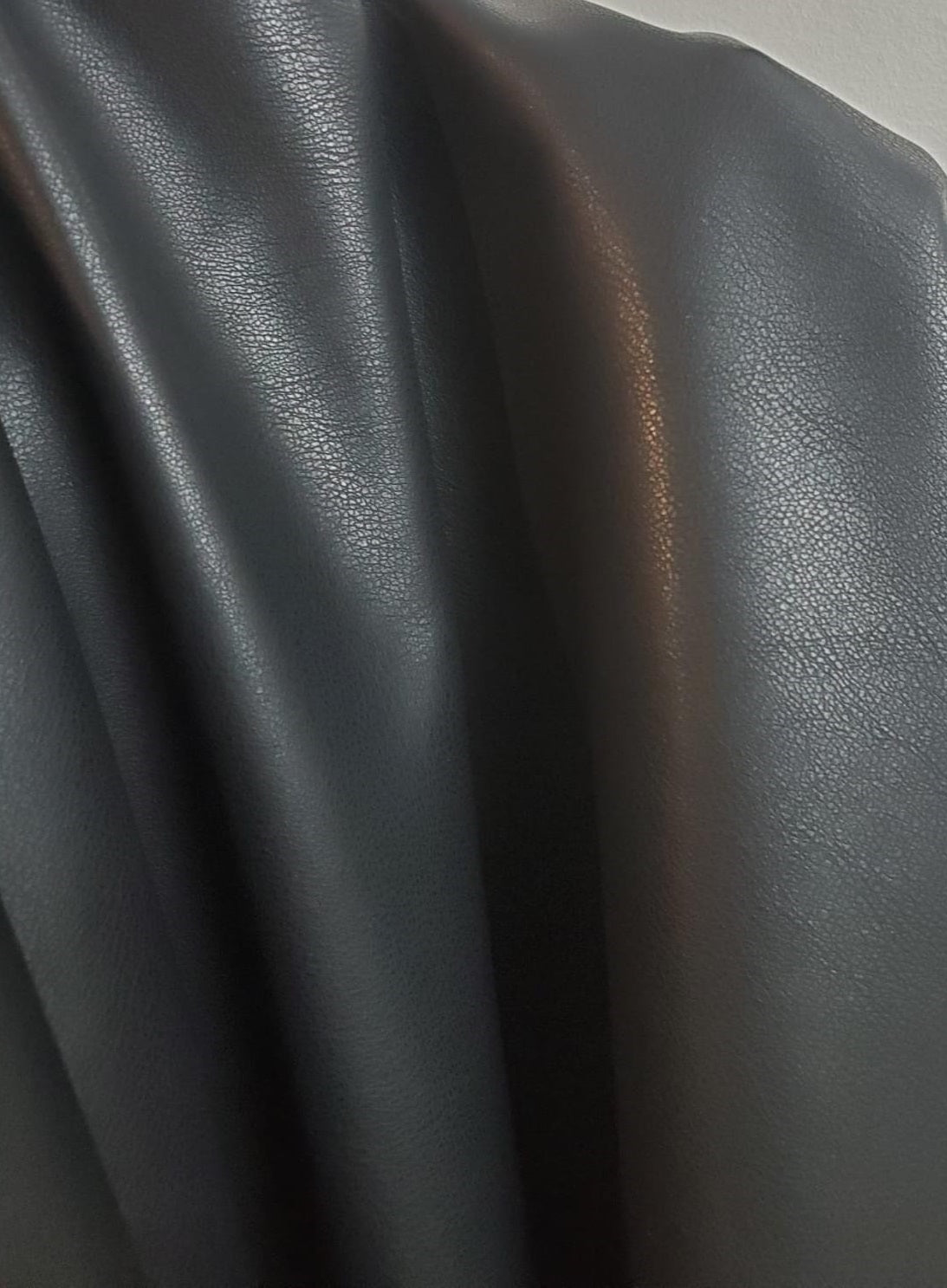
Illustrative image related to leather garment fabric
- Consideration: Evaluate the samples based on criteria such as softness, grain consistency, and colorfastness.
Step 5: Compare Pricing and Terms
After evaluating the quality of samples, compare the pricing and terms from different suppliers. Look beyond just the cost per yard; consider shipping fees, bulk discounts, and payment terms. A slightly higher price may be justified if it comes with better quality or more favorable terms.
- Advice: Keep a spreadsheet to track each supplier’s offerings, making it easier to compare them side by side.
Step 6: Assess Communication and Support
Effective communication is crucial throughout the sourcing process. Assess how responsive and knowledgeable suppliers are when addressing your queries. Strong communication can prevent misunderstandings and streamline the procurement process, ensuring that your needs are met efficiently.
- Action: Initiate discussions with potential suppliers to gauge their customer service levels and willingness to collaborate.
Step 7: Finalize Contracts and Place Orders
Once you have chosen a supplier, ensure all terms are clearly outlined in a contract. This should include pricing, delivery timelines, and quality assurances. A well-defined contract protects both parties and sets clear expectations.
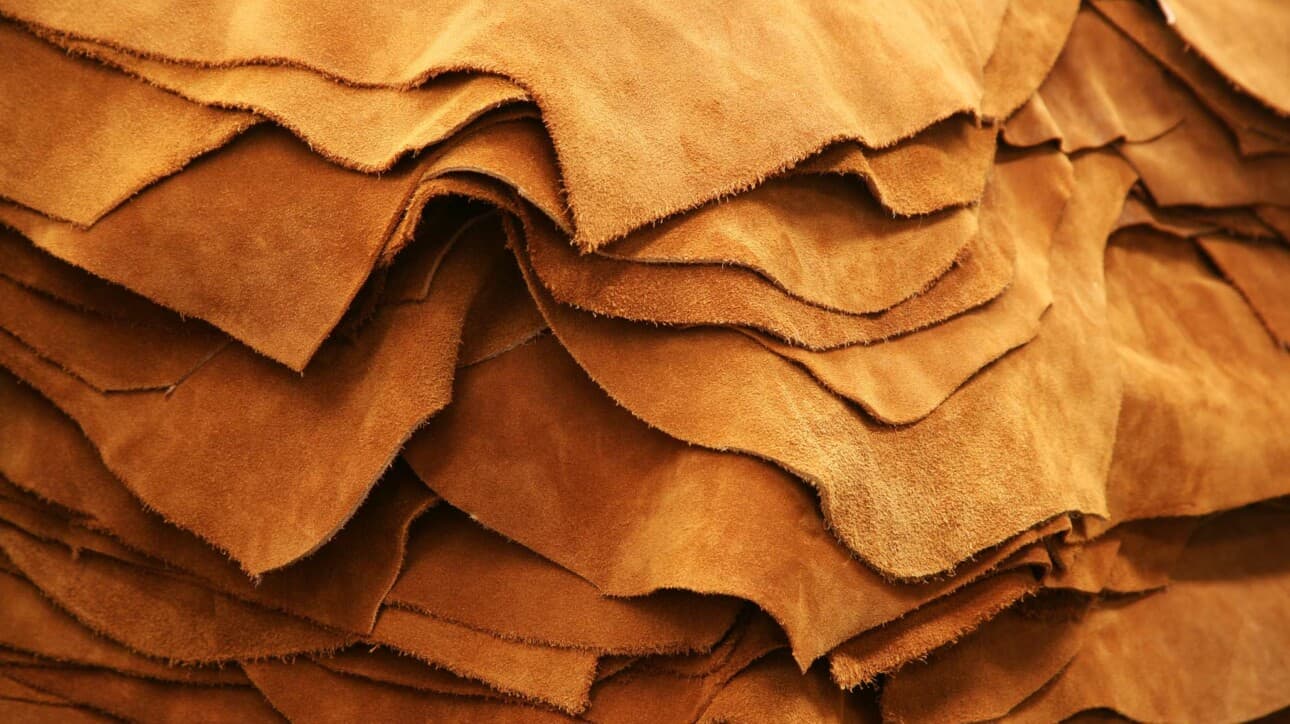
Illustrative image related to leather garment fabric
- Reminder: Review the contract thoroughly and consider legal consultation if necessary to ensure all aspects are covered.
By following this checklist, B2B buyers can effectively source leather garment fabric that meets their specific needs while building a strong, reliable supplier relationship.
Comprehensive Cost and Pricing Analysis for leather garment fabric Sourcing
What Are the Key Cost Components in Leather Garment Fabric Sourcing?
Understanding the cost structure of leather garment fabric is essential for effective sourcing. The primary components include:
-
Materials: The type of leather significantly impacts the cost. Genuine leather, sourced from animal hides, is generally more expensive than synthetic alternatives. The quality of the leather, such as full-grain or top-grain, also affects pricing.
-
Labor: Labor costs vary depending on the region of production. Regions with lower wage standards may offer competitive pricing, but it’s crucial to assess the skill level of labor to ensure quality craftsmanship.
-
Manufacturing Overhead: This includes costs associated with the operation of the manufacturing facility, utilities, and equipment maintenance. Higher overhead costs can lead to increased product prices.
-
Tooling: Custom tooling and molds for leather garment production can be a substantial upfront investment. The complexity of the design and production process will dictate tooling costs.
-
Quality Control (QC): Implementing stringent QC processes is vital for maintaining product quality, which can add to overall costs. Buyers should consider the level of QC employed by suppliers when evaluating pricing.
-
Logistics: Shipping costs can vary widely based on distance, shipping methods, and the scale of the order. International shipping may also involve customs duties and tariffs.
-
Margin: Suppliers will typically include a markup to cover their operational costs and profit margin, which can vary based on market conditions and competition.
How Do Price Influencers Affect Leather Fabric Costs?
Several factors can influence the pricing of leather garment fabric:
-
Volume and Minimum Order Quantity (MOQ): Larger orders often result in lower per-unit costs due to economies of scale. Buyers should negotiate MOQ terms to maximize cost efficiency.
-
Specifications and Customization: Custom designs and specific requirements can lead to higher costs. Standardized products are typically less expensive, so consider balancing customization with budget constraints.
-
Materials: The choice between genuine and synthetic leather, along with the specific type of leather, can lead to significant price differences. Always assess the trade-offs between cost and quality.
-
Quality and Certifications: Higher-quality leathers or those with certifications (e.g., eco-friendly, cruelty-free) may command premium pricing. Buyers should evaluate whether these certifications align with their brand values.
-
Supplier Factors: Supplier reliability, reputation, and location can influence pricing. Conduct due diligence to ensure that you partner with a reputable supplier who can deliver on quality and timelines.
-
Incoterms: Understanding the agreed-upon Incoterms (International Commercial Terms) is crucial for determining who bears responsibility for shipping costs, insurance, and customs clearance, which can affect overall pricing.
What Buyer Tips Can Enhance Cost Efficiency in Leather Fabric Sourcing?
-
Negotiate Effectively: Use volume commitments and long-term partnerships as leverage in negotiations. Suppliers may be more willing to offer discounts for guaranteed repeat business.
-
Consider Total Cost of Ownership (TCO): Look beyond the initial purchase price. Assessing the long-term costs associated with quality, durability, and maintenance can lead to more informed purchasing decisions.
-
Understand Pricing Nuances for International Buyers: Buyers from regions such as Africa, South America, the Middle East, and Europe must consider currency fluctuations, shipping times, and customs regulations. Staying informed about these factors can prevent unexpected costs.
-
Research Local Market Trends: Prices can vary based on local demand and competition. Understanding these trends can help buyers negotiate better deals and avoid overpaying.
-
Request Samples: Before finalizing orders, request samples to evaluate quality and ensure it meets your specifications. This step can prevent costly mistakes down the line.
Disclaimer Regarding Pricing
Prices for leather garment fabric can fluctuate based on market conditions, availability, and regional factors. Buyers should always seek updated quotes from multiple suppliers and conduct thorough market research to ensure they are receiving competitive pricing.
Alternatives Analysis: Comparing leather garment fabric With Other Solutions
When considering the procurement of garment fabrics, it is essential to evaluate various alternatives to leather garment fabric. Each alternative presents unique attributes, catering to different market demands and buyer preferences. Understanding these distinctions can aid B2B buyers in making informed decisions that align with their business goals and customer expectations.
| Comparison Aspect | Leather Garment Fabric | Faux Leather | Canvas |
|---|---|---|---|
| Performance | Highly durable, breathable, and thermal-regulating. | Less durable, but water-resistant and easier to clean. | Very durable; excellent for heavy-duty applications but less luxurious. |
| Cost | Generally higher due to sourcing and processing. | Typically lower; budget-friendly option. | Cost-effective, especially in bulk. |
| Ease of Implementation | Requires specialized stitching and handling. | Easier to sew and handle, with no special tools required. | Easy to work with, versatile across various applications. |
| Maintenance | Requires conditioning and special care to maintain appearance. | Low maintenance; easy to wipe clean. | Simple to clean; often machine washable. |
| Best Use Case | Ideal for high-end apparel, accessories, and upholstery. | Suitable for budget-friendly fashion and casual wear. | Best for outdoor gear, bags, and heavy-duty applications. |
What Are the Advantages and Disadvantages of Faux Leather?
Faux leather, also known as synthetic leather, is made from plastic materials that mimic the look and feel of real leather. One of its primary advantages is affordability, making it an attractive option for businesses looking to provide stylish products without the high costs associated with genuine leather. Additionally, faux leather is easier to clean and maintain, making it suitable for fashion-forward brands targeting younger demographics. However, it lacks the durability and breathability of real leather, which may limit its application in high-end markets or products requiring longevity.
How Does Canvas Compare as an Alternative to Leather?
Canvas is a robust fabric made from cotton or a cotton blend, known for its durability and versatility. It is an excellent choice for heavy-duty applications, such as outdoor gear and workwear, and is often more cost-effective than leather. Canvas can be produced in various weights and finishes, allowing for a wide range of applications. However, it does not offer the same luxurious appearance or thermal-regulating properties as leather, which may deter businesses aiming for premium products.
Conclusion: How to Choose the Right Fabric for Your Needs?
Selecting the right fabric for your garment production requires a thorough understanding of your target market and product specifications. Leather garment fabric is ideal for high-end applications where durability and luxury are paramount. In contrast, faux leather provides a budget-friendly alternative that appeals to a broader audience, while canvas serves well in heavy-duty and outdoor contexts. B2B buyers should weigh these factors carefully, considering performance, cost, and maintenance to choose the solution that best aligns with their business objectives and customer preferences.
Essential Technical Properties and Trade Terminology for leather garment fabric
What Are the Key Technical Properties of Leather Garment Fabric?
Understanding the essential technical properties of leather garment fabric is crucial for international B2B buyers looking to make informed purchasing decisions. Here are some critical specifications to consider:
-
Material Grade
– Leather is categorized into different grades based on quality, durability, and appearance. Common grades include full-grain, top-grain, genuine leather, and bonded leather. Full-grain leather, for instance, retains the natural texture and imperfections of the hide, making it the most durable and desirable for high-end garments. Buyers should evaluate material grades to ensure they meet the required standards for their specific applications. -
Thickness
– The thickness of leather, measured in millimeters, can significantly affect the fabric’s performance and suitability for various garment types. Thicker leather is generally more durable and suitable for outerwear, while thinner leather is often used for linings or more delicate garments. Understanding thickness helps buyers select appropriate materials for their designs and end-use requirements. -
Tensile Strength
– This property measures the leather’s resistance to being pulled apart. High tensile strength is vital for garments that undergo significant stress and wear, such as jackets and bags. Buyers should seek leather with high tensile strength to ensure longevity and reduce the frequency of replacements. -
Water Resistance
– Leather can be treated to enhance its water resistance or waterproof capabilities. This property is particularly important for garments designed for outdoor use. Buyers should assess whether the leather has been treated with water-repellent finishes to meet specific functional requirements. -
Grain Texture
– The grain of leather can vary widely, from smooth to pebbled or distressed finishes. The texture not only impacts the aesthetic appeal but also affects the leather’s durability and maintenance needs. Buyers should consider the desired look and feel of their products when selecting leather with specific grain characteristics. -
Colorfastness
– This property indicates how well the leather maintains its color when exposed to light, water, or abrasion. High colorfastness is crucial for garments that will be subjected to wear and environmental conditions. Buyers should ensure that the leather meets colorfastness standards to maintain product integrity over time.
What Are Common Trade Terms Used in the Leather Garment Fabric Industry?
Familiarity with industry jargon is essential for effective communication and negotiation in B2B transactions. Here are some common terms:
-
OEM (Original Equipment Manufacturer)
– This term refers to companies that produce parts or equipment that may be marketed by another manufacturer. In the leather industry, an OEM may create leather goods that are branded under a different label. Understanding OEM relationships can help buyers evaluate production capabilities and brand partnerships. -
MOQ (Minimum Order Quantity)
– MOQ is the smallest quantity of goods that a supplier is willing to sell. This term is critical for buyers to know as it impacts inventory management and cash flow. Buyers should negotiate MOQs that align with their business needs to avoid excess stock or shortages. -
RFQ (Request for Quotation)
– An RFQ is a document issued by a buyer to suppliers inviting them to submit price proposals for specific products or services. This process helps buyers compare prices and assess supplier capabilities effectively. Crafting a clear RFQ can lead to better pricing and terms. -
Incoterms (International Commercial Terms)
– These are predefined commercial terms published by the International Chamber of Commerce, which outline the responsibilities of buyers and sellers in international trade. Understanding Incoterms is crucial for determining shipping costs, risks, and responsibilities, helping buyers make informed logistics decisions. -
Lead Time
– This refers to the time taken from placing an order to receiving the goods. Lead time is crucial for supply chain management and can affect production schedules. Buyers should factor in lead times when planning their inventory and production cycles. -
Sustainability Certification
– This term pertains to certifications that indicate whether the leather has been produced sustainably, considering environmental and ethical practices. As sustainability becomes increasingly important, buyers should prioritize suppliers who can provide proof of sustainability certifications.
By understanding these properties and terms, international B2B buyers can make informed decisions when sourcing leather garment fabric, ensuring quality, compliance, and alignment with their business strategies.
Navigating Market Dynamics and Sourcing Trends in the leather garment fabric Sector
What Are the Current Market Dynamics and Key Trends in the Leather Garment Fabric Sector?
The global leather garment fabric market is witnessing a surge driven by increasing consumer demand for high-quality, durable, and stylish products. This growth is further fueled by the rising disposable incomes in emerging markets across Africa, South America, and the Middle East, alongside a strong fashion industry in Europe and Asia. Notably, B2B buyers are now gravitating toward innovative sourcing solutions that leverage digital platforms and technologies such as AI-driven analytics, which help identify market trends and consumer preferences more efficiently.
Emerging trends indicate a shift towards customization, where buyers seek unique designs tailored to specific customer segments. The integration of e-commerce platforms has simplified the sourcing process, allowing international buyers to access a broader range of suppliers and products. This digital transformation is also enhancing supply chain transparency, enabling buyers to track the journey of materials from sourcing to delivery. Furthermore, as global trade dynamics shift, buyers are encouraged to diversify their supplier base to mitigate risks associated with geopolitical uncertainties.
How Is Sustainability Shaping Sourcing Practices in the Leather Garment Fabric Sector?
Sustainability has become a cornerstone of sourcing strategies in the leather garment fabric sector. The environmental impact of traditional leather production, which involves significant water usage and chemical treatments, has prompted an industry-wide push towards more sustainable practices. B2B buyers are increasingly prioritizing suppliers who adopt eco-friendly tanning processes and utilize recycled or upcycled materials, significantly reducing their carbon footprint.
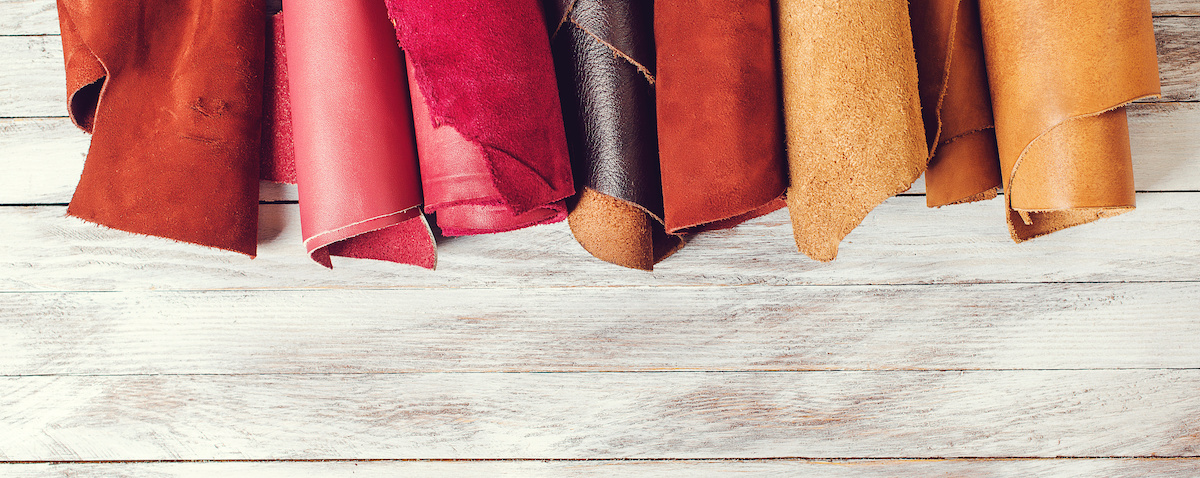
Illustrative image related to leather garment fabric
Ethical sourcing is also gaining traction, with buyers looking for suppliers who adhere to fair labor practices and transparent supply chains. Certifications such as the Global Organic Textile Standard (GOTS) and the Leather Working Group (LWG) are becoming essential benchmarks for verifying the sustainability of leather products. By aligning with suppliers that hold these certifications, businesses can enhance their brand reputation and appeal to environmentally conscious consumers.
What Is the Historical Context of Leather Garment Fabric in B2B Markets?
The evolution of leather garment fabric dates back centuries, with its use rooted in necessity for protection against harsh weather and elements. Traditionally, leather was sourced from local animals and processed using rudimentary techniques. Over time, advancements in tanning methods and technology have transformed leather into a luxury commodity, widely used in fashion and upholstery.
In the modern B2B landscape, the leather garment fabric sector has adapted to changing consumer demands, with a focus on quality, durability, and style. The rise of fast fashion has further accelerated production cycles, compelling suppliers to innovate and streamline their operations. Today, the sector not only emphasizes aesthetics but also incorporates sustainability and ethical practices, reflecting a profound shift in buyer expectations and industry standards.
Frequently Asked Questions (FAQs) for B2B Buyers of leather garment fabric
-
How do I choose the right leather garment fabric for my products?
Selecting the ideal leather garment fabric requires understanding your target market and the intended use of the product. Consider factors such as durability, texture, and aesthetic appeal. For instance, if you’re producing high-end jackets, opt for soft, premium leather that offers comfort and luxury. Alternatively, for more rugged applications like workwear, look for tougher, more durable options. Always request samples to evaluate quality and ensure the fabric aligns with your brand’s image before making bulk purchases. -
What types of leather are best suited for garment manufacturing?
The best types of leather for garment manufacturing include full-grain, top-grain, and suede. Full-grain leather is the most durable and ages beautifully, making it ideal for luxury products. Top-grain leather is slightly more affordable and has a more uniform appearance, suitable for a range of apparel. Suede offers a softer texture and is excellent for fashion items but may require more care. Assess your product’s needs and price point to determine the most appropriate leather type. -
What minimum order quantities (MOQs) should I expect when sourcing leather garment fabric?
MOQs for leather garment fabric can vary significantly based on the supplier and the type of leather. Generally, you might encounter MOQs ranging from 50 to 500 yards, depending on the fabric’s quality and the supplier’s production capabilities. It’s essential to discuss your specific requirements with potential suppliers to negotiate terms that suit your business model, especially if you are a small or mid-sized company. -
How can I ensure the quality of leather garment fabric when sourcing internationally?
To ensure quality when sourcing leather garment fabric internationally, conduct thorough supplier vetting. Request certifications, product samples, and references from previous clients. Utilize third-party quality assurance services to inspect shipments before they leave the supplier’s facility. Establish clear quality standards and communicate them to your supplier to avoid discrepancies. Regular audits and visits to the manufacturing site, if feasible, can further enhance quality control. -
What payment terms are commonly used in international leather fabric transactions?
Payment terms in international transactions typically include options such as advance payment, letters of credit, or payment upon delivery. Many suppliers require a deposit (usually 30-50%) before production begins, with the balance due upon shipment or delivery. It’s vital to negotiate terms that protect your interests, considering factors like currency fluctuations and shipping times. Always ensure that payment methods are secure to mitigate risks associated with international trade. -
What logistical considerations should I keep in mind when importing leather garment fabric?
When importing leather garment fabric, consider shipping methods, customs regulations, and lead times. Air freight is faster but more expensive, while sea freight is cost-effective for larger shipments but takes longer. Be aware of import duties and taxes that may apply to leather products in your country. Collaborating with a reliable freight forwarder can help navigate these complexities, ensuring that your shipments arrive on time and in compliance with all regulations. -
Can I customize the leather garment fabric I source?
Many suppliers offer customization options for leather garment fabric, including color, texture, and even embossed designs. Customization can enhance your brand’s uniqueness and appeal to specific market segments. However, be mindful that custom orders may come with higher MOQs and longer lead times. Discuss your requirements early in the sourcing process to ensure the supplier can meet your specifications while maintaining quality standards. -
What are the environmental considerations when sourcing leather garment fabric?
Sustainability is increasingly important in the leather industry. When sourcing, inquire about the supplier’s tanning processes and whether they use environmentally friendly methods. Look for certifications that indicate responsible sourcing, such as the Leather Working Group certification. Additionally, consider suppliers that offer synthetic or eco-friendly leather alternatives, which can reduce your environmental footprint while still delivering quality products. Engaging in sustainable practices can enhance your brand’s reputation and appeal to environmentally conscious consumers.
Top 4 Leather Garment Fabric Manufacturers & Suppliers List
1. Fabric Wholesale Direct – Leather Fabrics
Domain: fabricwholesaledirect.com
Registered: 2014 (11 years)
Introduction: This company, Fabric Wholesale Direct – Leather Fabrics, is a notable entity in the market. For specific product details, it is recommended to visit their website directly.
2. Mood Fabrics – Genuine Leather by the Yard
Domain: moodfabrics.com
Registered: 2001 (24 years)
Introduction: Buy Leather Fabric by the Yard | Genuine Leather Material. Free Shipping on Domestic Orders over $150.
3. Fashion Fabric LA – Faux Leather Vinyl Fabrics
Domain: fashionfabricla.com
Registered: 2014 (11 years)
Introduction: Faux Leather Vinyl Fabrics By The Yard – Wholesale & Retail
4. Sewport – Leather Fabric
Domain: sewport.com
Registered: 2015 (10 years)
Introduction: Leather Fabric, also known as Hide or Skin, is a natural fabric made from tanned animal skins. It is characterized by its durability, water-resistance, insulative properties, and luxurious softness. Leather has a low breathability, low moisture-wicking abilities, high heat retention, low stretchability, and is prone to low pilling/bubbling. The fabric is commonly used in jackets, coats, wallets, b…
Strategic Sourcing Conclusion and Outlook for leather garment fabric
How Can Strategic Sourcing Enhance Your Leather Garment Fabric Procurement?
In conclusion, strategic sourcing of leather garment fabric is essential for international B2B buyers aiming to optimize their supply chain and enhance product offerings. By focusing on quality, sustainability, and supplier relationships, businesses can secure durable and versatile leather materials that meet diverse market needs. The value of leather in apparel, accessories, and upholstery applications cannot be overstated, especially as consumer demand grows for stylish and functional products.
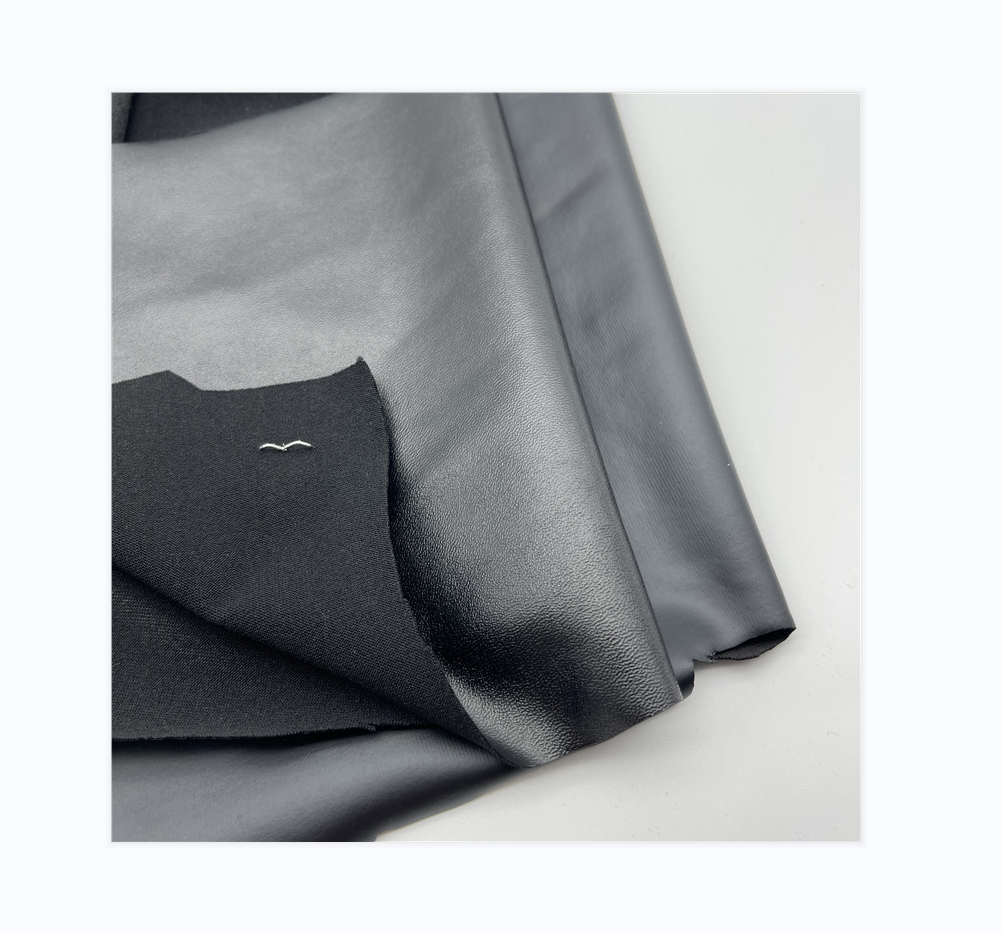
Illustrative image related to leather garment fabric
Buyers in regions such as Africa, South America, the Middle East, and Europe should actively seek partnerships with reputable suppliers who prioritize innovation and environmental responsibility. This not only ensures access to high-quality materials but also aligns with the global shift toward sustainability in fashion and manufacturing.
As you navigate the leather sourcing landscape, consider leveraging market insights and trends to stay ahead of the competition. By adopting a proactive approach to sourcing and embracing new technologies, your business can thrive in the evolving leather market. Now is the time to engage with suppliers, explore new product lines, and position your brand for success in the dynamic global marketplace.
Important Disclaimer & Terms of Use
⚠️ Important Disclaimer
The information provided in this guide, including content regarding manufacturers, technical specifications, and market analysis, is for informational and educational purposes only. It does not constitute professional procurement advice, financial advice, or legal advice.
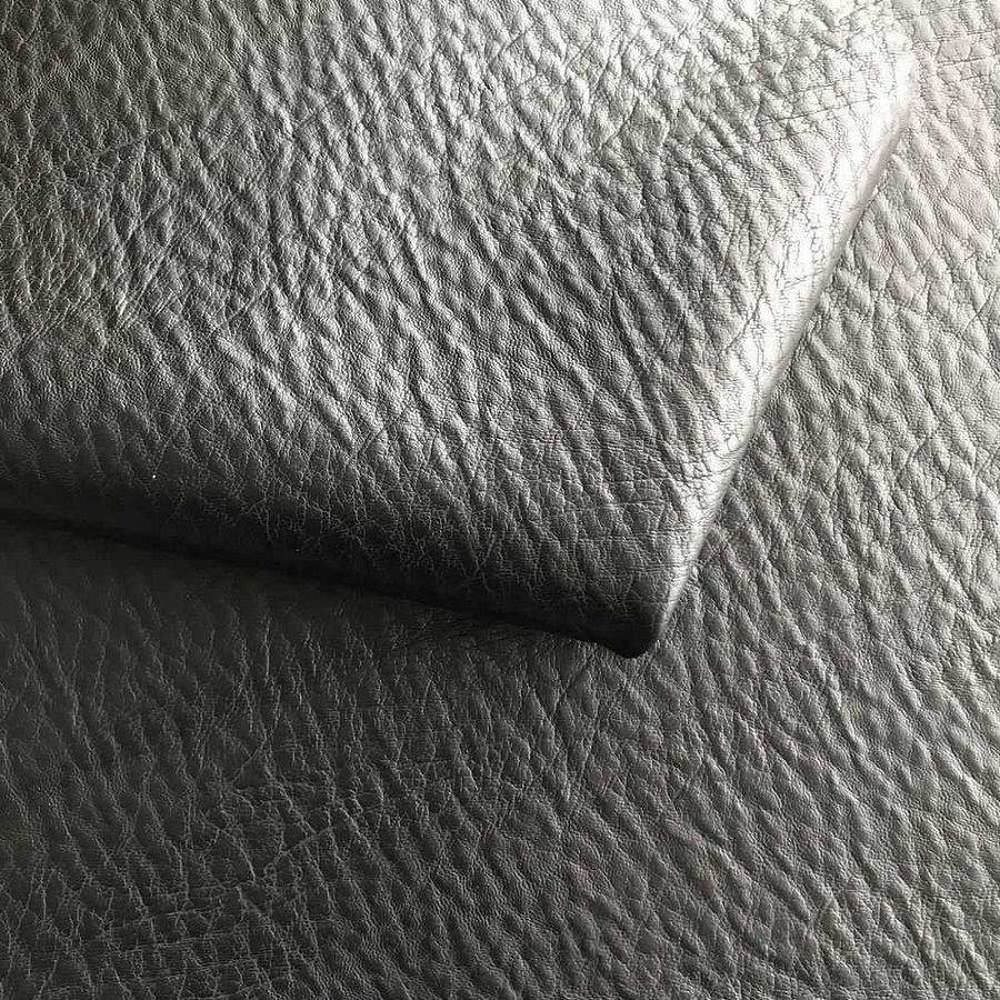
Illustrative image related to leather garment fabric
While we have made every effort to ensure the accuracy and timeliness of the information, we are not responsible for any errors, omissions, or outdated information. Market conditions, company details, and technical standards are subject to change.
B2B buyers must conduct their own independent and thorough due diligence before making any purchasing decisions. This includes contacting suppliers directly, verifying certifications, requesting samples, and seeking professional consultation. The risk of relying on any information in this guide is borne solely by the reader.


